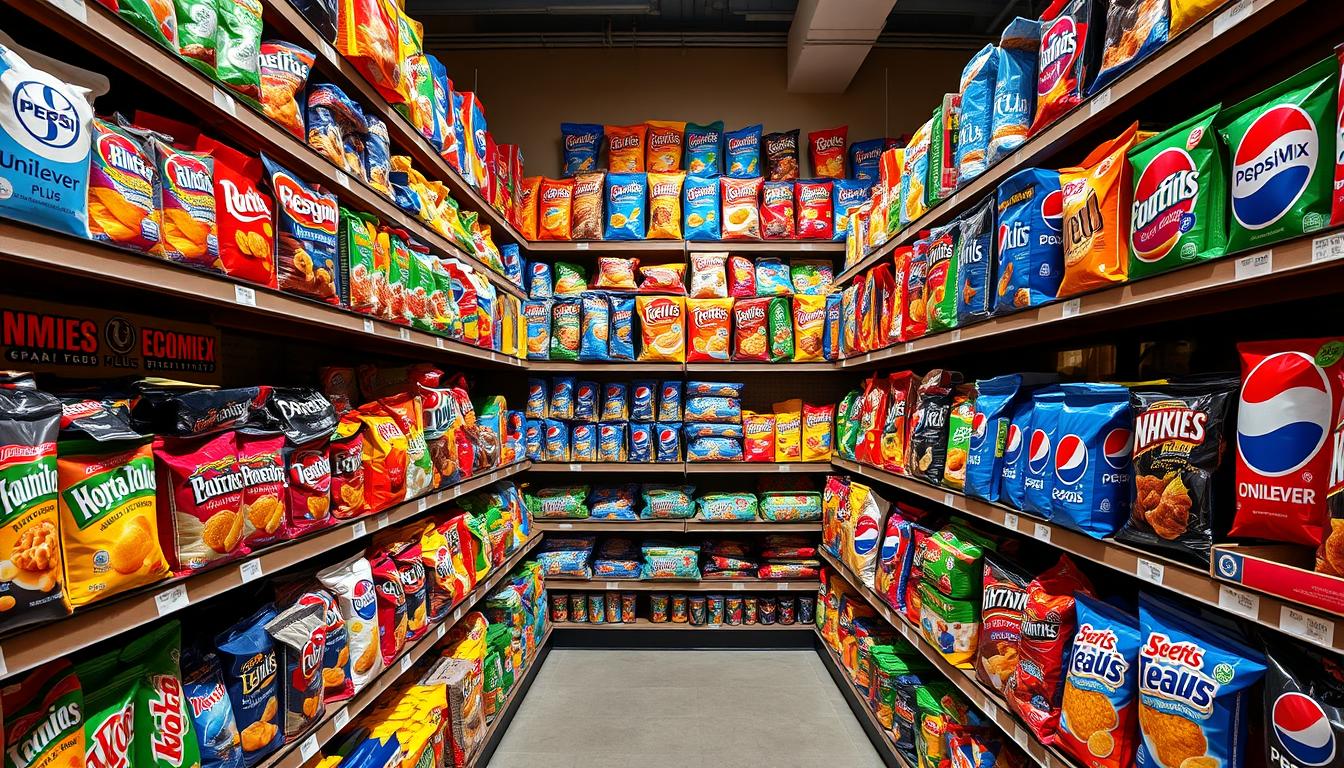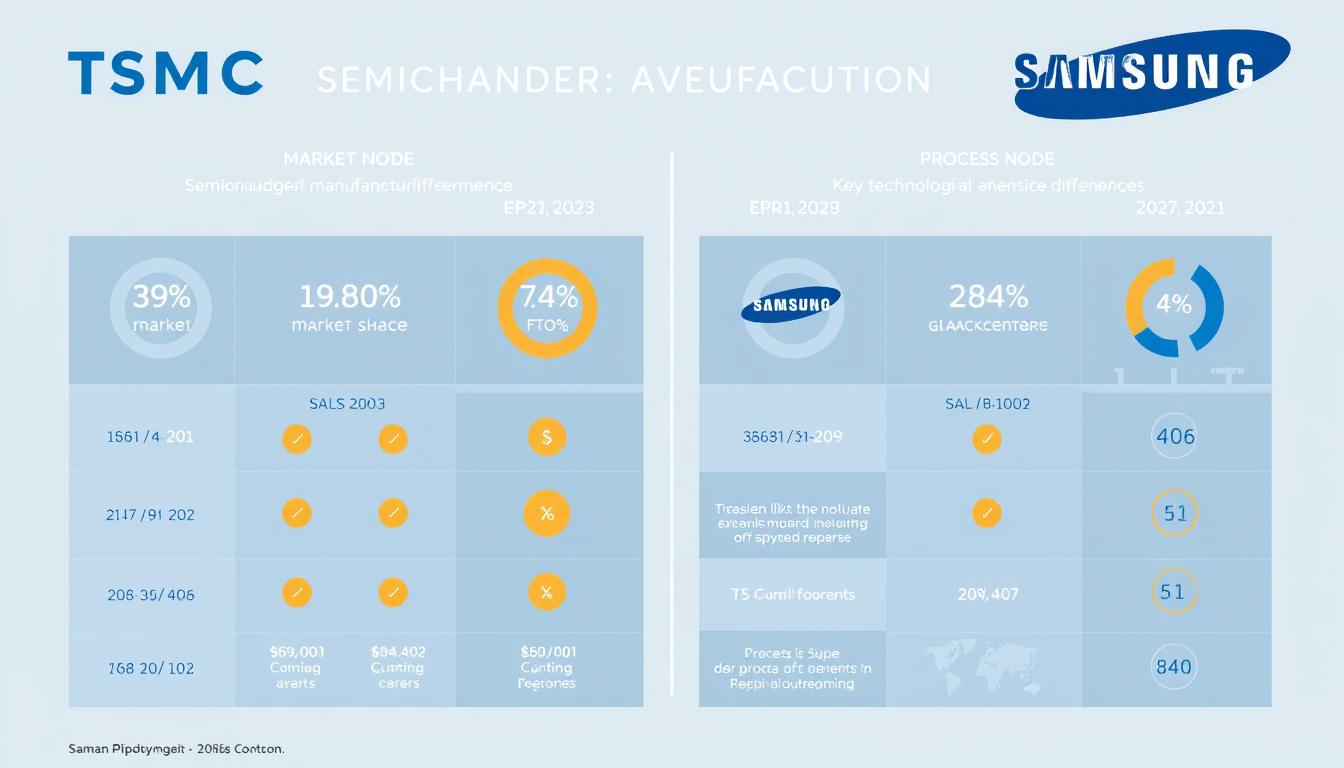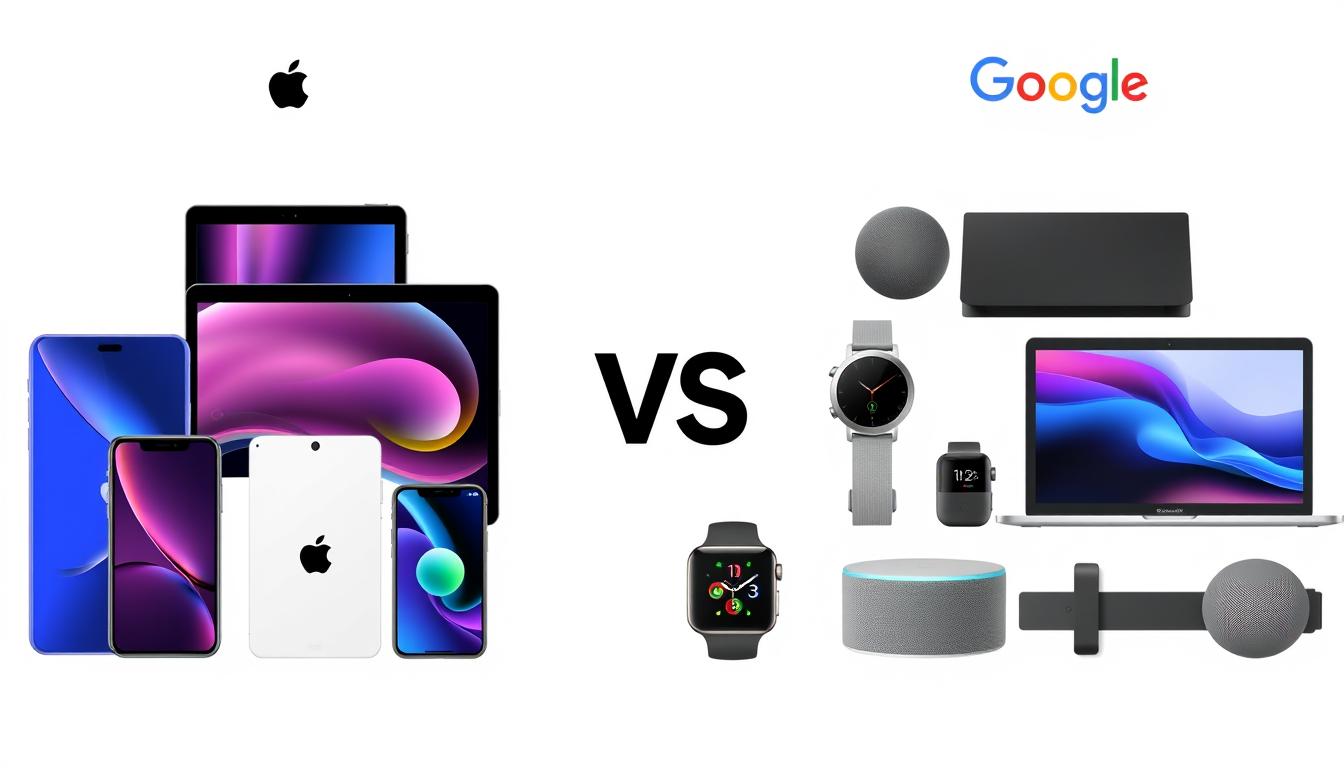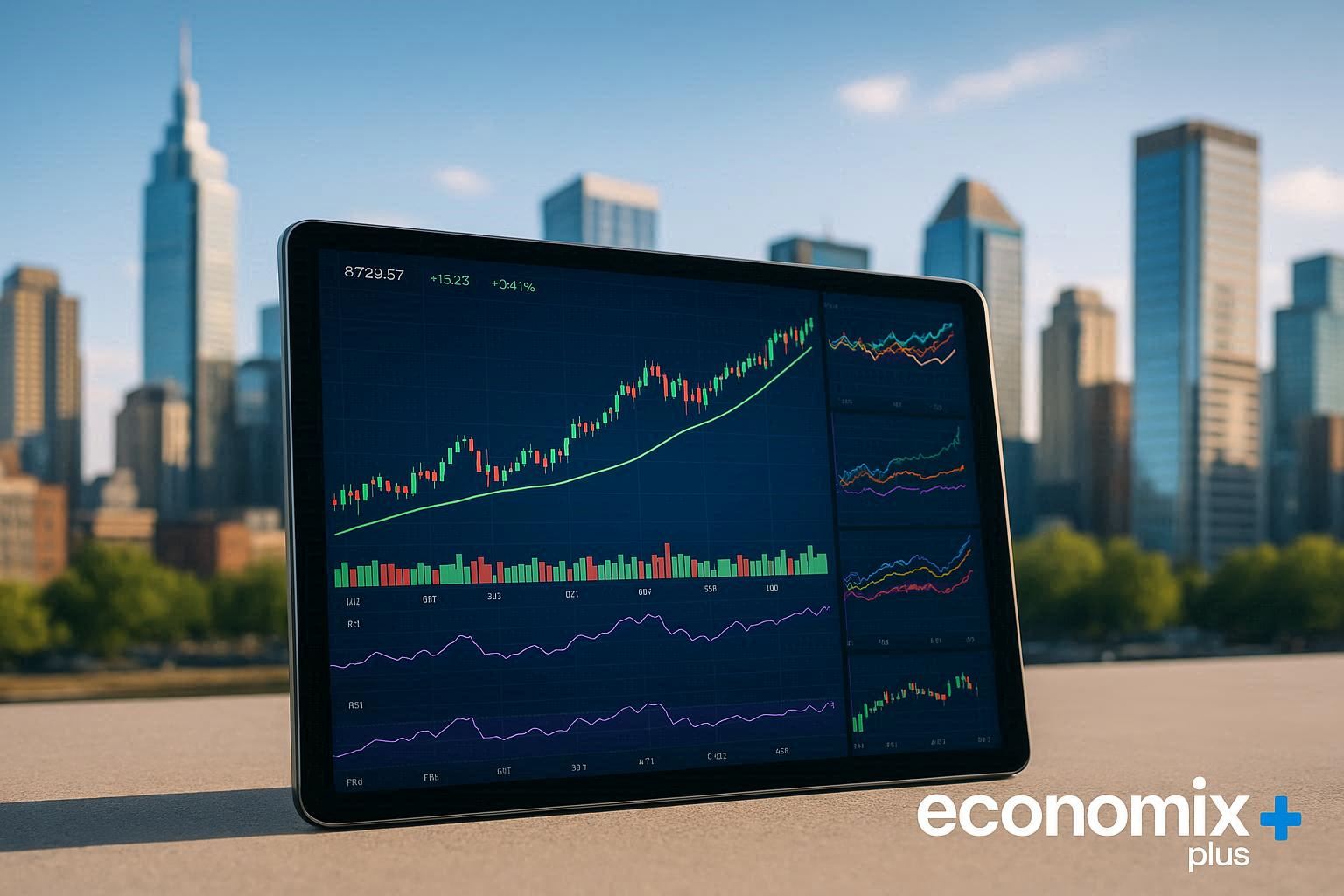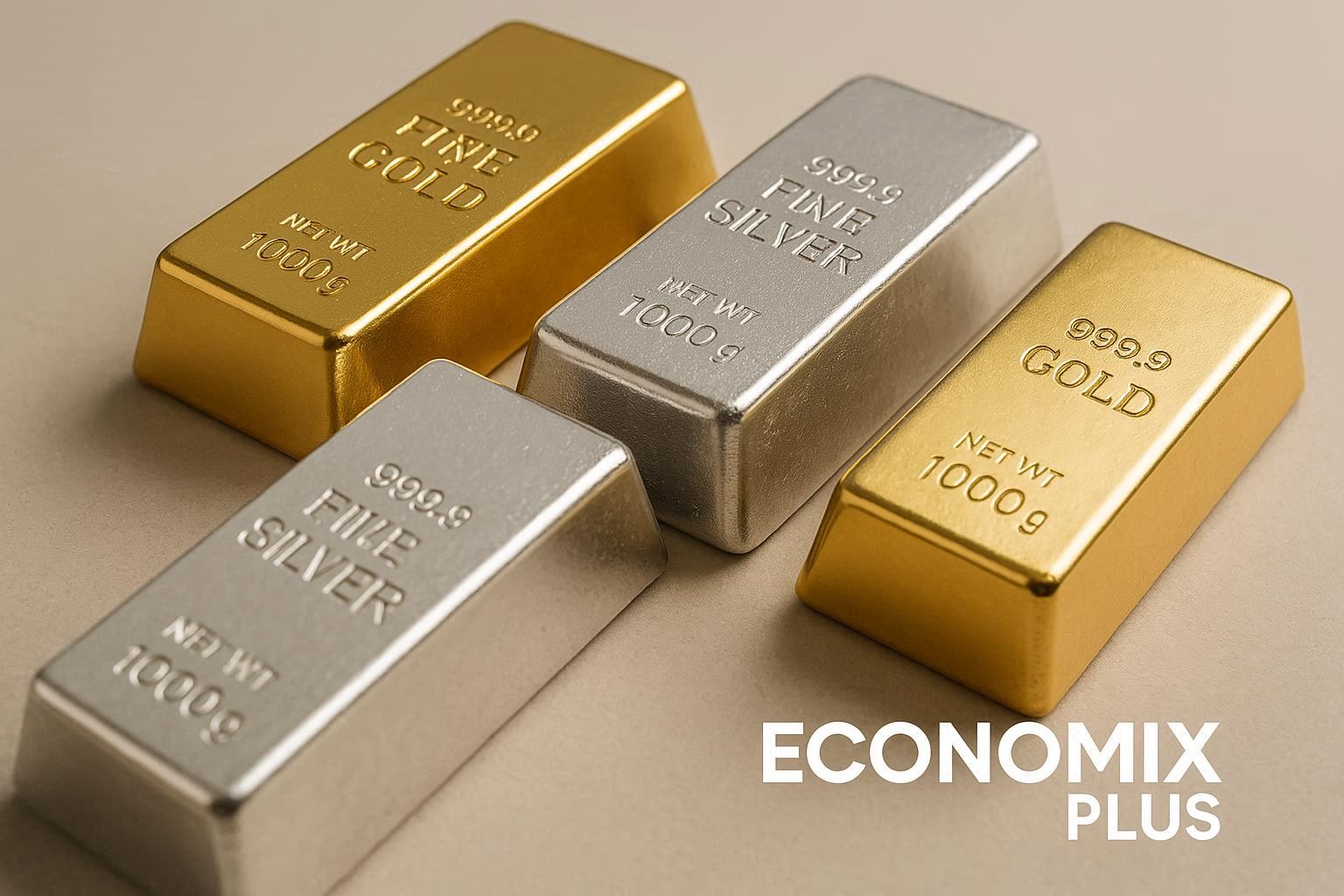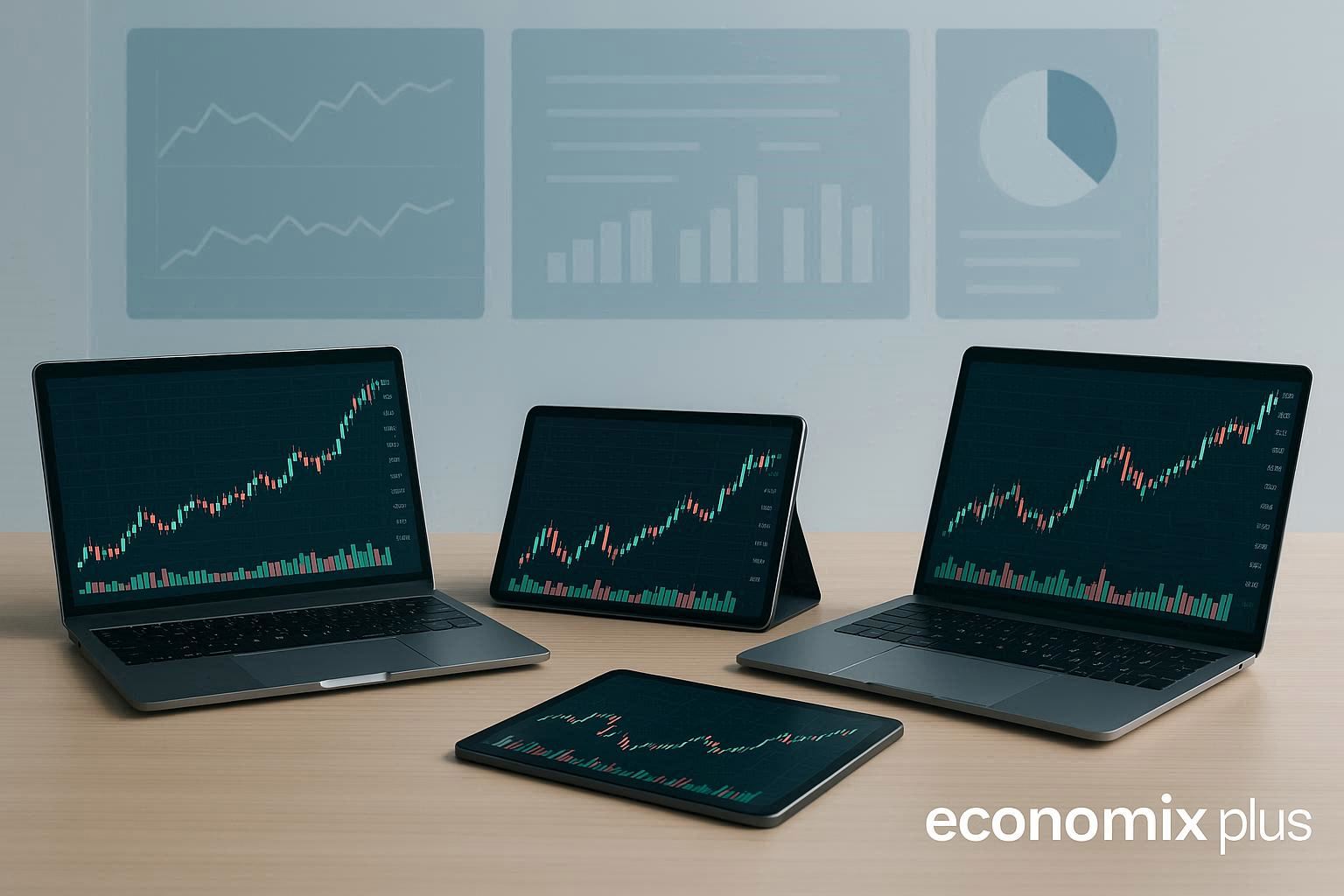With a valuation of $472.78 billion in 2023, the snack industry is fiercely competitive. Two giants, Unilever and PepsiCo, drive innovation while battling for consumer loyalty. But which strategy wins—health-focused products or aggressive acquisitions?
Asia-Pacific holds the largest share, but North America grows rapidly. The sector expanded by 3.67% during COVID-19, proving resilience. Plant-based snacks clash with indulgent classics, reflecting shifting consumer tastes.
Key Takeaways
- The global snack sector is projected to reach $658.49 billion by 2032.
- Health-focused brands compete against acquisition-driven expansion.
- Asia-Pacific dominates, while North America accelerates growth.
- Pandemic-driven demand boosted sales by 3.67% in 2020.
- Innovations like plant-based options redefine market trends.
Global Snack Food Market Overview
The global snack industry continues its upward trajectory, reaching unprecedented valuations. Consumers prioritize convenience, fueling demand across regions. This section breaks down key metrics shaping the sector’s future.
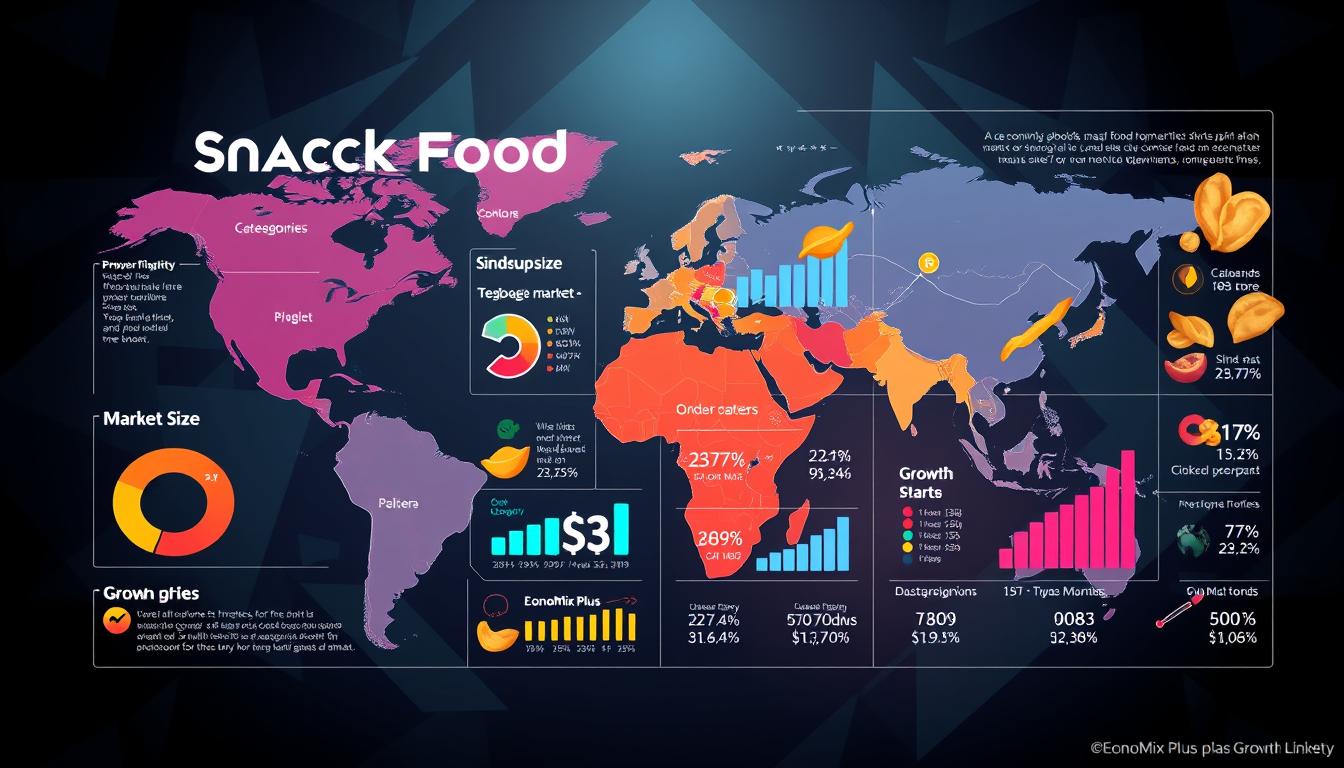
Current Market Size and Valuation
In 2023, the sector’s valuation hit $472.78 billion, per Straits Research. The pandemic accelerated trends like meal replacements, with 56% of consumers opting for snacks over traditional meals.
“Snacks became a pantry staple during lockdowns,”
notes an IFIC survey.
Projected Growth and CAGR (2024-2032)
Analysts diverge slightly on long-term forecasts. Straits Research predicts a 3.8% CAGR, reaching $658.49 billion by 2032. Fortune Business Insights projects a steeper 5.3% CAGR, aiming for $838.6 billion by 2029.
| Source | Projected Valuation | CAGR |
|---|---|---|
| Straits Research | $658.49B (2032) | 3.8% |
| Fortune Insights | $838.6B (2029) | 5.3% |
E-commerce sales surged 15% post-pandemic, while premium snacks saw a 24% price hike. Emerging markets face intense private-label competition, reshaping pricing strategies.
Key Market Dynamics Shaping the Industry
Consumer habits are reshaping the snack industry at an unprecedented pace. Post-pandemic, 85% of Americans altered eating routines, prioritizing speed and nutrition. This shift fuels fierce competition among brands to deliver convenient and healthy options.
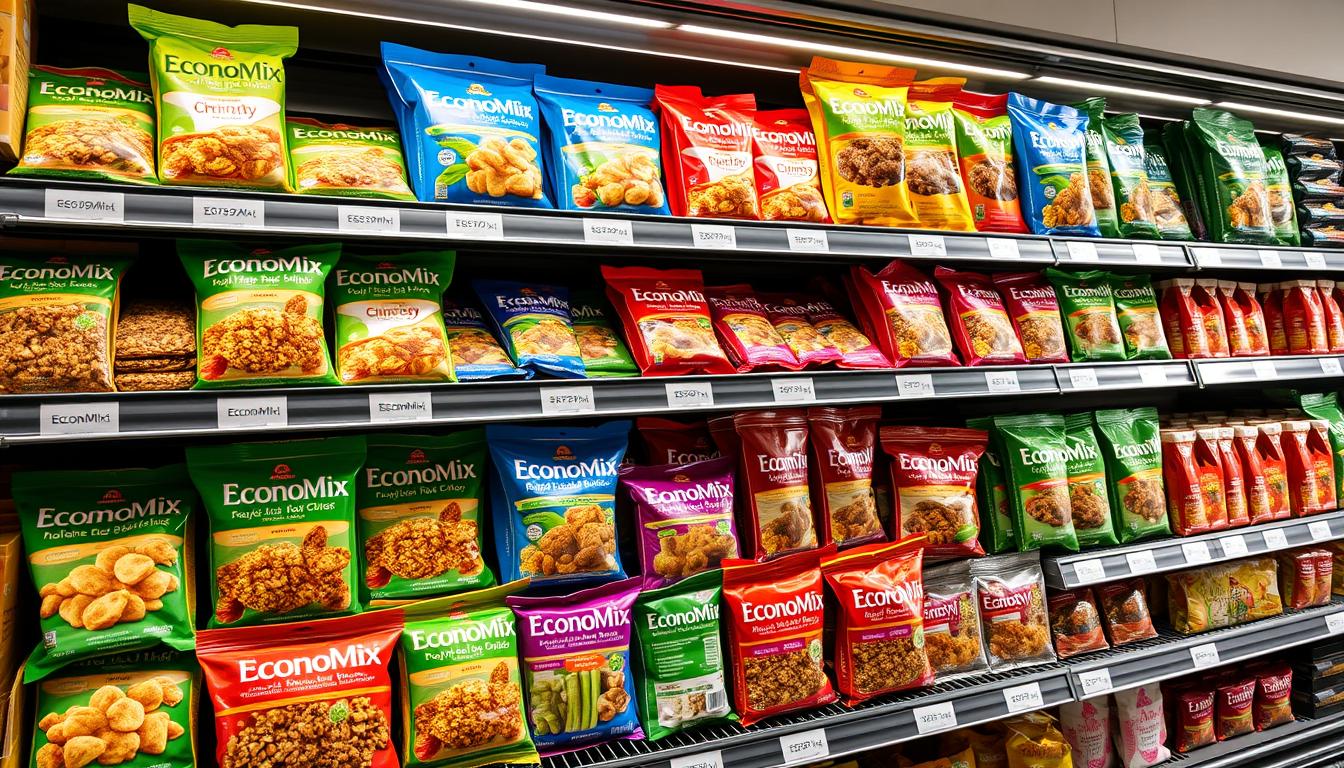
Growing Demand for Convenient and Healthy Snacks
Today, 74% of U.S. adults snack daily, per 2024 IFIC data. Time-crunched lifestyles drive demand for grab-and-go products with functional benefits. Keto and paleo-friendly innovations, like high-protein nut clusters, now dominate shelves.
Brands respond with strategic launches. For example, PepsiCo’s Off the Eaten Path veggie chips saw 40% sales growth, capitalizing on plant-powered cravings. Similarly, Unilever’s Horlicks Protein+ targets India’s fitness boom with fortified nutrition.
Rising Popularity of Plant-Based and Functional Snacks
The plant-based sector grows 18% yearly, reports the Good Food Institute. Functional snacks—packed with probiotics or adaptogens—will hit $103 billion by 2025 (Mordor Intelligence).
“Consumers want snacks that multitask: energize, nourish, and delight,”
notes a GFI analyst. From mushroom jerky to collagen-infused bars, innovation merges health with indulgence.
Unilever vs. PepsiCo: Snack Food Market Share Analysis
Two industry titans clash in the snack sector, each wielding distinct strategies. While one focuses on acquisitions, the other prioritizes health-centric innovation. Their battle for dominance reflects broader trends in consumer preferences and market share dynamics.
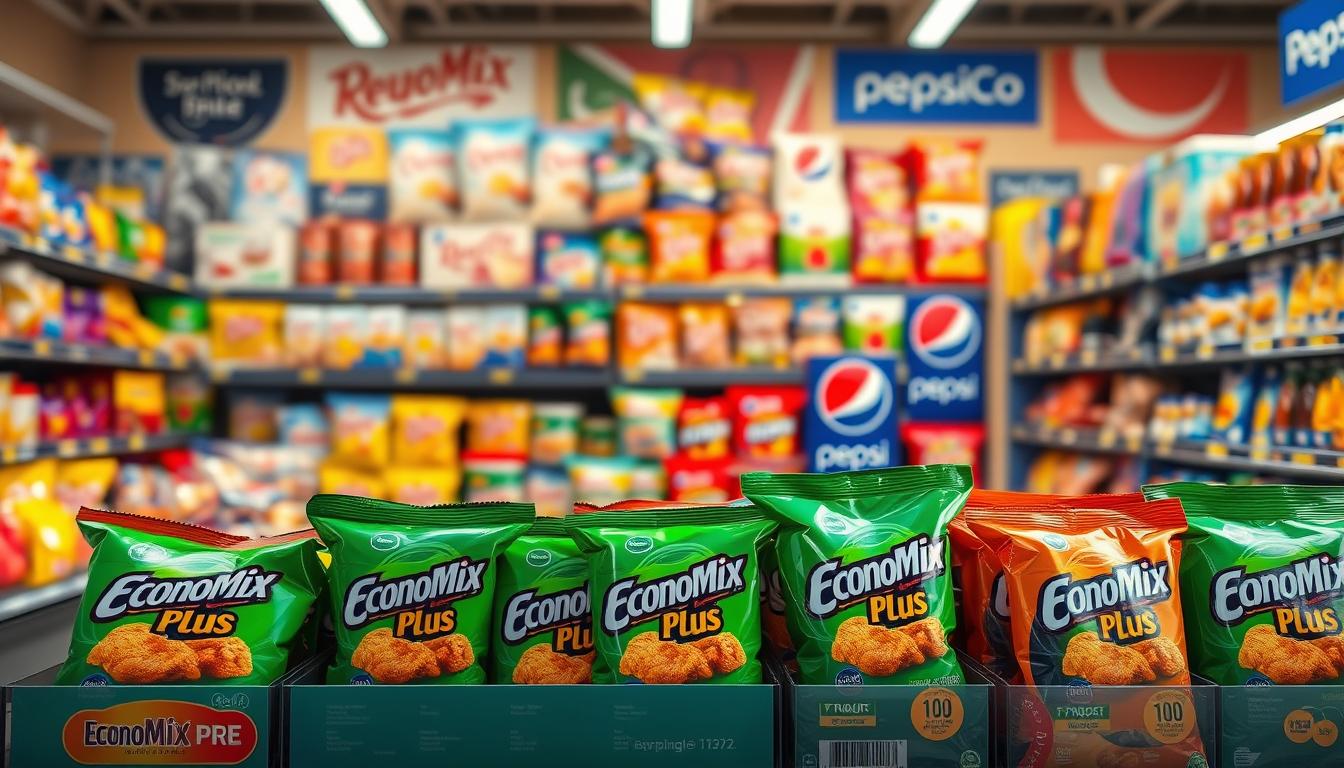
Product Portfolio Comparison
PepsiCo commands 18% of the savory snacks segment, per Statista. Its Frito-Lay division dominates with classics like Doritos, while recent moves like the $1.65B Poppi acquisition target wellness trends. In contrast, Unilever’s Ben & Jerry’s and Nutrafol cater to premium and functional niches.
- PepsiCo: Expands through deals (e.g., Poppi) and salty snacks.
- Unilever: Invests in protein-enhanced and plant-based lines.
Brand Strength and Consumer Loyalty
Doritos ranks #1 in chip brands (YouGov), but Knorr’s global recognition rivals Quaker Oats. Emerging markets highlight diverging tactics—Unilever’s African revenue grew 35%, while PepsiCo leverages TikTok for Lay’s campaigns.
“Digital engagement separates winners; AR and viral content drive loyalty,”
notes a YouGov analyst. Magnum’s AR experiences showcase Unilever’s tech-forward approach.
Regional Dominance in the Snack Food Sector
Regional preferences dictate snack industry growth, with distinct trends emerging across continents. From spicy flavors in Asia to sustainable packaging in Europe, consumer demands vary sharply. This geographic fragmentation shapes how brands innovate and compete.
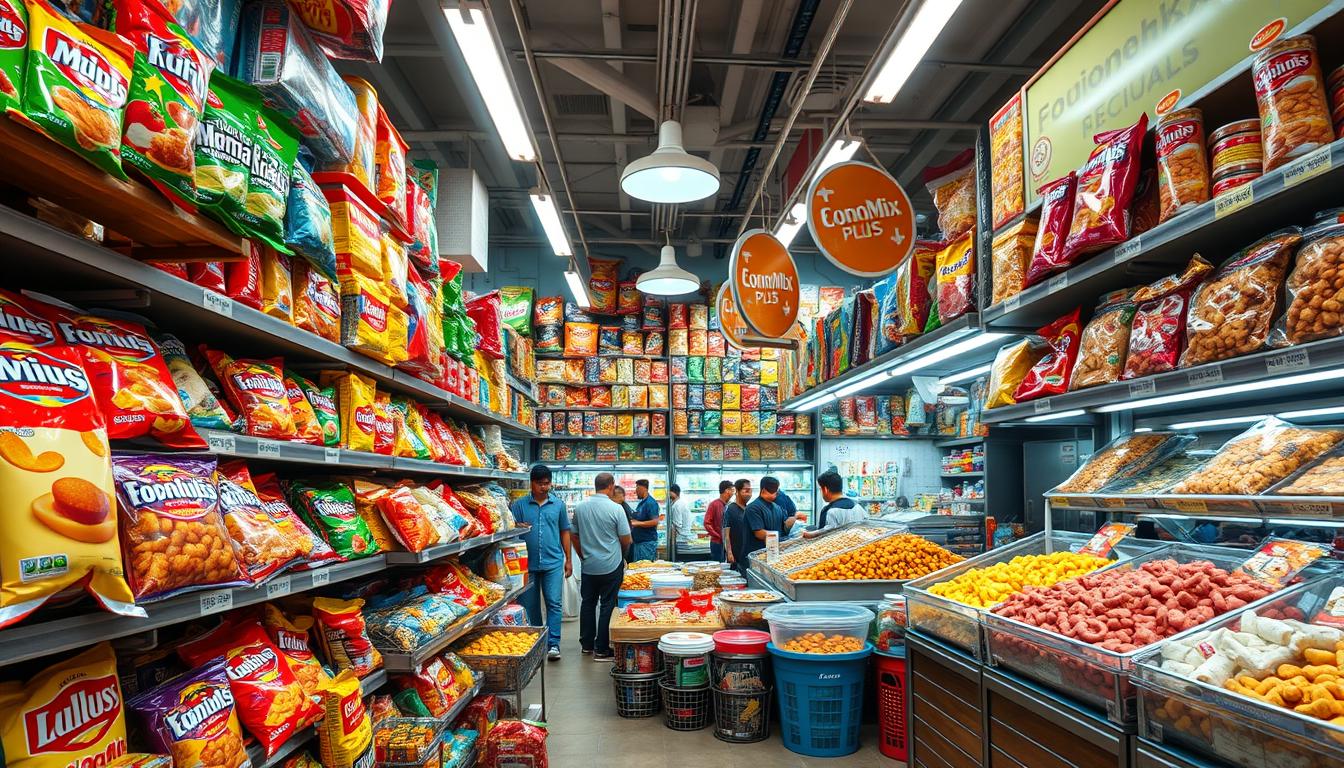
Asia-Pacific: Largest Market for Savory Snacks
Asia-Pacific holds the largest market share, fueled by a 5.1% CAGR (Straits Research). Localized flavors like Sichuan pepper chips thrive, with 68% of Chinese consumers preferring regional tastes. India’s street-food-inspired snacks also drive growth, blending tradition with convenience.
North America: Fastest-Growing Region
North America leads in protein snacks, claiming 22% of global sales. Keto-friendly bars and plant-based jerky dominate shelves. Despite a slower 2.7% CAGR, premiumization offsets volume declines—organic snacks grew 14% last year.
Europe’s Focus on Sustainable Snacking
Europe mandates 65% recyclable packaging by 2025, pushing brands to reformulate. *HFSS restrictions* challenge sugar-heavy products, but seed-based crisps and algae snacks fill the gap. Germany’s vegan snack segment grew 21% in 2023.
- Middle East Africa: Halal-certified snacks surged 40%, with dates and tahini bars leading.
- Africa’s cassava chips: A $3.2B opportunity by 2027 (AfDB).
“Regional adaptability is non-negotiable. What works in Tokyo fails in Texas.”
Distribution Channels: Where the Battle is Fought
The battle for consumer attention extends beyond products to where they’re sold. Brands compete fiercely across distribution channels, from sprawling supermarkets to instant-delivery apps. Winning shelf space—or screen space—dictates market success.
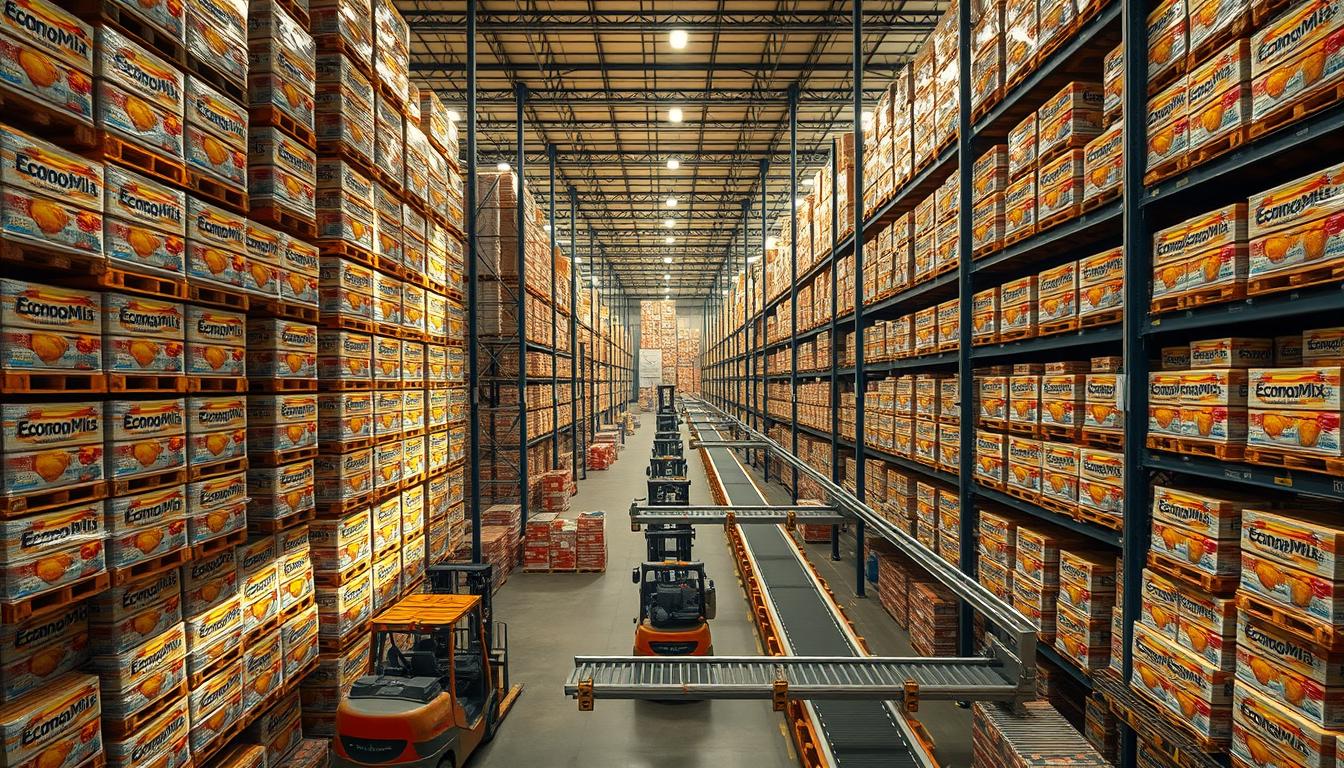
Supermarkets and Hypermarkets Lead Sales
Supermarkets hypermarkets dominate, capturing 58% of sales (Straits Research). Walmart’s endcap displays and bulk promotions drive impulse buys. Private labels like Kroger’s Simple Truth grew 12% last year, pressuring national brands.
Online Retail’s Rapid Expansion
Online retail surged 34% post-pandemic. Amazon’s Subscribe & Save program locks in repeat purchases, while dark stores enable 15-minute deliveries. Smaller brands leverage Instagram shops to bypass retail fees.
Convenience Stores’ Role in Impulse Purchases
Convenience stores thrive on immediacy. 7-Eleven’s private-label snacks jumped 19% YoY, fueled by late-night cravings. Cashless vending machines in airports and offices further blur lines between retail formats.
| Channel | Growth (2020–2023) | Key Driver |
|---|---|---|
| Supermarkets/Hypermarkets | 4.2% CAGR | Private-label expansion |
| Online Retail | 34% | Subscription models |
| Convenience Stores | 7.1% CAGR | Impulse purchases |
- Dark stores cut delivery times to under 30 minutes.
- Vending machines now accept facial recognition payments.
- Target’s “Snack Zones” boost checkout-adjacent sales by 22%.
“Physical stores still drive discovery, but digital owns convenience.”
Product Segmentation: What Consumers Prefer
Product preferences reveal sharp divides in consumer snacking habits. Brands strategize around three key categories—savory, bakery, and frozen—each with unique growth drivers. Innovation accelerates as taste profiles and convenience demands evolve.
Savory Snacks Dominate Market Share
Savory snacks command 38% of the sector, per FBI data. Salty, crunchy options like Pringles drive sales, with limited-edition flavors boosting revenue by 15%. Artisanal jerky brands challenge giants like Jack Link’s, emphasizing clean labels.
Regional flavors fuel competition. Spicy kimchi chips in Asia and dill pickle varieties in the U.S. reflect localized tastes. Consumers prioritize bold flavors, with 62% willing to pay extra for premium ingredients.
Rising Demand for Bakery and Confectionery Snacks
Bakery snacks thrive, blending indulgence with portability. Croissant-based innovations, like Lidl’s launch, target breakfast-on-the-go crowds. Protein-packed muffins and gluten-free cookies also gain traction.
“Consumers want sweetness without guilt—functional ingredients are non-negotiable.”
- Dark chocolate bars with adaptogens grew 28% YoY.
- Keto-friendly cookies now hold 12% of the snacks segment.
Frozen and Refrigerated Snacks Gain Traction
Frozen food grows at 6.2% CAGR (Grand View Research). Brands like Talenti expand into plant-based gelato, while savory options—mozzarella sticks, dumplings—cater to at-home cravings.
| Category | Growth Driver |
|---|---|
| Frozen Desserts | Lactose-free demand (+22%) |
| Refrigerated Bars | Protein enrichment (+18%) |
Quick-prep positioning appeals to time-strapped shoppers. Air-fryer-friendly snacks alone grew 40% in 2023.
Consumer Trends Driving Innovation
Innovation in the snack sector now revolves around two powerful forces: health and flavor. Consumers increasingly seek products that deliver nutritional benefits without compromising taste. This dual demand pushes brands to rethink formulas and flavor profiles.
Health-Conscious Snacking Preferences
Mintel reports 62% of shoppers prioritize low-sugar options, signaling a major shift. Protein-enhanced and fiber-rich alternatives dominate shelves, with keto-friendly versions growing 28% annually. Clean labels also influence purchases—53% scrutinize ingredient lists before buying.
“Today’s consumers want transparency. They expect snacks to fuel their bodies, not just satisfy cravings.”
Flavor Innovation and Fusion Trends
Innova data shows fusion flavor launches jumped 27% last year. Regional mashups like Tajín-dusted mango snacks cater to adventurous palates. The rising demand for global tastes has brands experimenting with everything from gochujang popcorn to matcha-dipped almonds.
Functional ingredients add another layer. CBD-infused trail mixes and collagen bars blur lines between snacks and supplements. This reflects how modern consumers view product categories—as interchangeable solutions for energy, nutrition, and enjoyment.
- Sparkling waters now feature caffeine boosts (Bubly Bounce)
- Plant-based indulgences expand (Magnum Vegan Ruby Chocolate)
- Ancient grains meet modern tech (quinoa crisps with AR packaging)
Impact of COVID-19 on Snack Consumption Patterns
COVID-19 didn’t just disrupt lives—it rewrote snack consumption rules globally. Despite economic turmoil, the market grew 3.67% in 2020 (FBI), as households stocked up on comfort foods and meal replacements. This shift revealed lasting changes in how people buy and enjoy snacks.
Shift to At-Home Snacking
Lockdowns turned homes into hubs for all-day grazing. Family-size packs surged 28% (Nielsen), while pantry-loading behaviors outlasted restrictions. Contactless delivery became standard, with 62% of consumers prioritizing bulk purchases for safety.
“Snacks transitioned from impulse buys to pantry essentials. Brands that adapted to larger pack sizes won loyalty.”
E-Commerce Acceleration
Online sales skyrocketed 42% in Q2 2020 (IRI). Subscription services like Universal Yums capitalized on exploration cravings, while dark stores enabled 15-minute deliveries. Private labels gained traction as budgets tightened, capturing 19% of demand.
- Pantry persistence: 44% of shoppers maintained stockpiling habits post-pandemic.
- Premiumization: Organic snacks grew 14% despite price hikes.
- Innovation: Brands added immunity-boosting ingredients to align with health concerns.
These trends hint at long-term shifts. Analysts predict the forecast period will retain hybrid shopping habits, blending digital convenience with nostalgic in-store discoveries.
Competitive Strategies of Market Leaders
Strategic moves by top brands reveal contrasting approaches to growth and innovation. While some key players pursue aggressive acquisitions, others double down on category-specific development. This divergence reflects fundamental differences in addressing increasing demand.
PepsiCo’s Acquisitions and Product Launches
The company leverages its scale through strategic deals, like the 2022 Ruffles NFT campaign that boosted engagement by 37%. Its Frito-Lay division now operates solar-powered facilities, cutting emissions while meeting snack production needs.
Cross-brand synergy drives innovation. SodaStream’s healthy positioning influences new bubbly snack lines. Meanwhile, limited-edition flavors generate buzz—jalapeño ranch Doritos drove $120M in incremental sales last quarter.
“Acquisition speed creates market advantages, but integration determines long-term success.”
Unilever’s Health-Focused Portfolio Expansion
A €1B plant-based investment fuels reformulations across brands like Ben & Jerry’s and Hellmann’s. The latter now offers protein-rich snack dips, converting condiment equity into new occasions.
Activism drives marketing ROI. Ben & Jerry’s social justice campaigns boosted loyalty among Gen Z by 22%. Knorr’s meal-specific snacks address nutrition gaps, with vitamin-fortified options gaining shelf space.
- Solar-powered production cuts Frito-Lay’s carbon footprint by 18% annually
- Hellmann’s leverages 94% brand recognition to enter adjacent categories
- Knorr’s snack pots achieve 65% repeat purchase rate among millennials
Emerging Markets: Middle East and Africa’s Potential
Rapid urbanization fuels snack demand across Middle East Africa, where the sector grows at 7.1% CAGR—outpacing global averages. Millennials drive health-focused innovation while traditional flavors maintain cultural relevance. This creates unique opportunities for brands adapting to local preferences.
Urbanization and Changing Lifestyles
Over 43% of the Middle East population now lives in cities, per World Bank data. Busy urban professionals seek convenient options like UAC Foods’ ready-to-eat plantain chips, which saw 35% revenue growth. Traditional ingredients get modern twists—camel milk chocolate bars in UAE blend heritage with premium positioning.
Local Brands vs. Global Giants
Regional players dominate certain niches through cultural understanding. Biko’s expanded its plantain chip line using hyper-local marketing, while Jumia’s e-commerce platform controls 60% of Africa’s online snack sales. Global brands respond with adaptations like halal-certified gummy bears.
- East Africa leads in fortified snacks—Unilever’s Blue Band bars address nutrition gaps
- Nigeria’s snack market grows 12% annually through hybrid retail models
- Saudi Arabia prefers single-serve packs for on-the-go consumption
“Localization isn’t optional here—consumers reject one-size-fits-all approaches.”
The region’s snack sector is projected to grow faster than Europe and North America through 2029. Success requires balancing global quality standards with authentic flavor profiles.
Future Outlook: Snack Food Market Forecast
The snack industry stands at a crossroads, where technology and sustainability will define success. As consumer expectations evolve, brands must adapt to stay competitive. This section explores key trends shaping the forecast period and beyond.
Technological Advancements in Production
Innovation is revolutionizing how snacks are made. AI-driven flavor development, like PepsiCo’s Pepviz tool, accelerates product testing by 60%. 3D-printed snacks will hit a market size of $525 million by 2030, per Allied Market Research.
Blockchain ensures supply chain transparency. Smart packaging with QR codes reveals ingredient origins. These advancements reduce waste while meeting global market demands for traceability.
- Upcycled ingredients transform food waste into profitable products
- Water-positive manufacturing cuts resource use by 30%
- Robotic automation increases production speed by 25%
Sustainability as a Competitive Edge
Eco-conscious choices now drive purchases. Trivium Packaging found 78% of buyers prioritize sustainable packaging. Brands respond with edible wrappers and compostable pouches.
“The future belongs to companies that embed sustainability into their DNA—not just their marketing.”
Circular economy principles gain traction. Notpla’s seaweed-based packaging decomposes in weeks. Solar-powered factories reduce carbon footprints while maintaining output.
| Initiative | Impact |
|---|---|
| Edible packaging | Reduces plastic waste by 40% |
| Carbon-neutral production | Cuts emissions by 18% annually |
These innovations prove that responsibility and profitability can coexist. The food sector’s future depends on balancing growth with environmental stewardship.
Conclusion
Regional tastes and eco-conscious choices now redefine competition in the snack sector. While one giant leverages scale, the other thrives on rapid innovation—each adapting to localized demand from Asia’s spicy chips to Africa’s urban convenience trends.
Sustainability emerges as the next battleground, with compostable packaging and upcycled ingredients gaining traction. Private labels squeeze margins, pushing brands to differentiate through tech or niche formulations.
By 2025, plant-based options will claim 20% of the market, per projections. Success hinges on blending health, flavor, and planet-friendly practices—a trifecta consumers increasingly prioritize.
